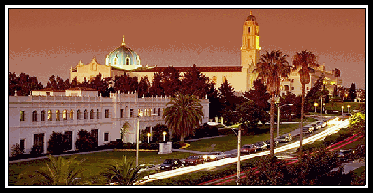|
C. Climate Change
-
Changes in the global climate, including
temperature, precipitation, storm frequency and intensity, and
changes in carbon and water cycles
-
Results from increased concentrations of
greenhouse gases in the atmosphere
-
Greenhouse gases
- gases such as carbon dioxide and methane whose atmospheric
concentrations influence global climate by trapping solar radiation
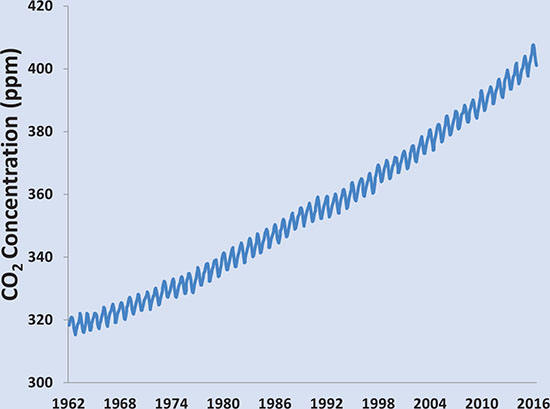
.
-
Global warming
- the increase in average global temperature as a result of
emissions from human activities
-
Greenhouse effect
- certain gases (carbon dioxide, methane, nitrous oxide, ozone plus
clouds and water vapor) in the atmosphere trap solar radiation
.
Global Annual Temperature Anomalies (°C), 1850–2015
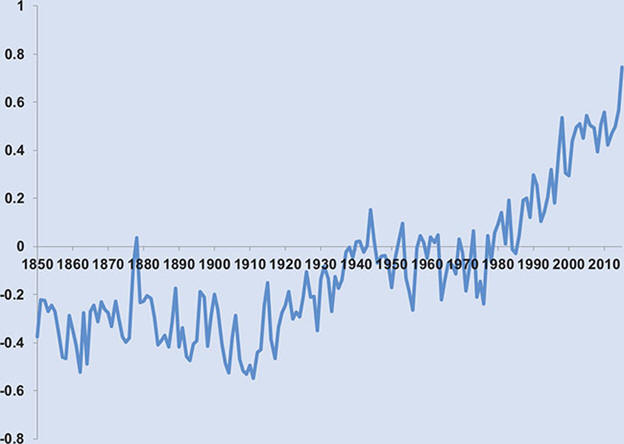
.
1. Framework for economic analysis
a. Greenhouse gas emissions are a
negative externality
b. The atmosphere is a
common property resource
c. Dealing with climate change is a
public good
.
2. Causes
-
Greenhouse gases are
cumulative or stock pollutants -
don't dissipate or degrade significantly over time, can accumulate
in the environment
-
Biggest contributor has been the use of
fossil fuels
-
Burning of coal generates the most carbon
dioxide (42%), followed by oil (33%) and natural gas (19%)
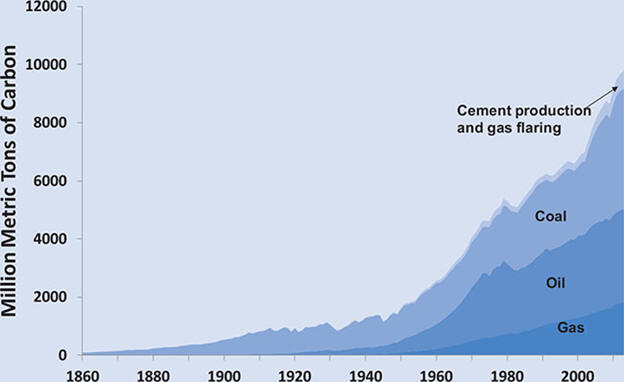
.
Percentage of Global CO2 Emissions
by Country/Region
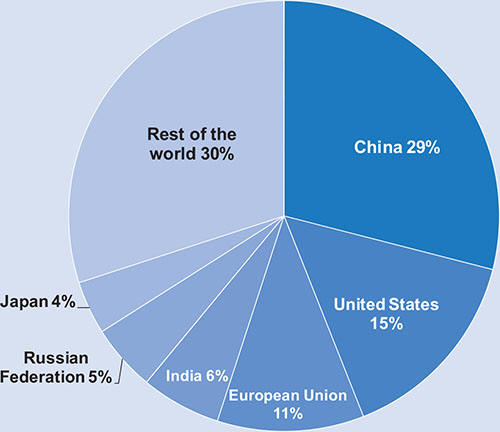
.
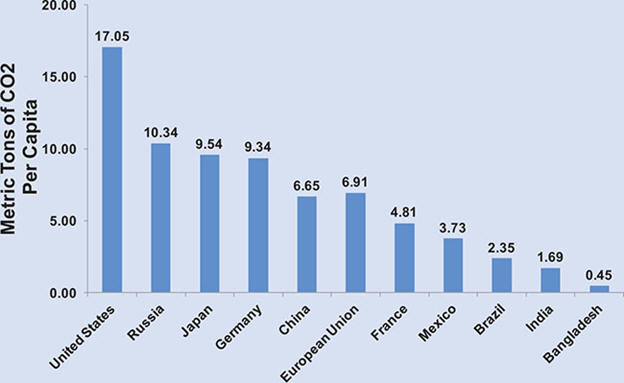
.
3. Impact
a. Ecosystem impacts
-
Glaciers retreating
-
Rising sea levels
-
Warmer ocean waters
-
Ocean
acidification - ocean water becoming more acidic
-
Disruption of weather patterns - more
extreme events (hurricanes, drought)
-
Positive feedback effect - warming releases
more carbon dioxide from frozen arctic tundra
-
Increased wildfires
.
b. Economic impacts
-
Loss of land area because of sea-level rise
-
Loss of species and forest area
-
Disruption of water supplies to cities and
agriculture
-
Increased air conditioning costs
-
Health damage and deaths from heat waves and
spread of tropical diseases
-
Loss of agricultural output due to drought
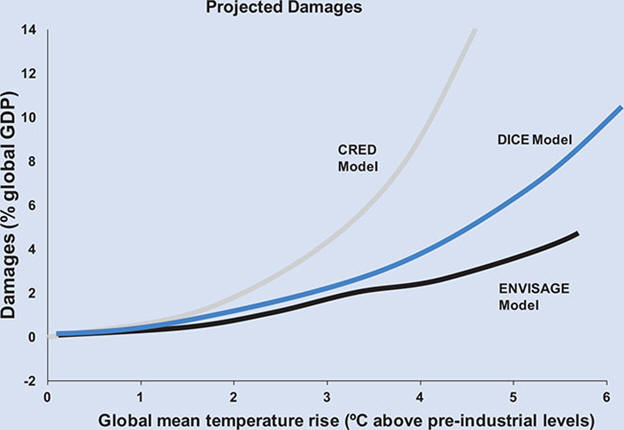
.
c. Positive impacts
.
4. Climate change and inequality
-
Impact of climate change would fall more
heavily on the poor
-
Reduced food production, water shortages,
coastal flooding, damage to forests and agriculture due to drier
conditions
-
Environmental
justice -
fair treatment of people with respect to the development,
implementation, and enforcement of environmental laws, regulations,
and policies
-
Climate justice
-
equitable sharing of the burdens of climate change and the costs of
policy responses
- Frames climate change as an ethical and
political issue in addition to being an environmental or physical issue
.
5. Climate stabilization
|

